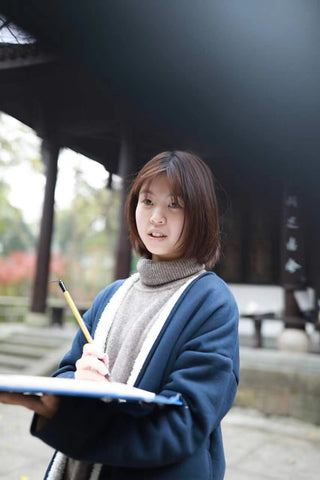Receive the latest inspiration from China Garden!

SHUYANG
Installation, Photography, and Painting
Shuyang, an artist based in London, is currently pursuing a postgraduate degree in Fine Art at Goldsmiths, University of London, following her undergraduate studies in Fine Arts at the China Academy of Art. Her artistic practice spans various mediums, including installation, photography, and painting.
Driven by themes of female resilience and vulnerability within her own family, Shuyang's work often navigates the intricacies of feminine identity and societal expectations. Beyond her exploration of femininity, her art also engages with themes such as consumerism, feminism, future archaeology, immigration, and diaspora. Through her creative endeavors, she aims to prompt viewers to contemplate the multifaceted nature of the human experience.

In this installation artwork, the exploration revolves around the theme of resilience and vulnerability within the women of Shuyang's family. These women bear significant responsibilities, such as nurturing and caring for loved ones.
During her childhood, Shuyang's grandparents were involved in a car accident, leaving her grandfather in a vegetative state after surgery. For over two decades, three generations of women rallied around him, tending to him with hope and love, despite his condition resembling that of a dead tree. Their collective efforts symbolized a profound family bond, nurturing hope and persevering through the anxiety of death. Her grandfather's existence became a testament to her grandmother's will to live, forging a symbiotic relationship that formed the backbone of their family tree.
The artwork reflects on themes of family dynamics and the resilience of life. Dead wood was chosen as the material to symbolize both the restoration of life and the enduring strength of the women in her family. Additionally, the intertwining identities of these women as survivors and caregivers underscore the complex emotions of anxiety and responsibility they face.
To represent the delicate yet resilient nature of these women, lace—a material traditionally associated with femininity—was chosen. By carefully wrapping lace around the dead wood and coating it with glue, a juxtaposition of hardness with softness and fragility was created, mirroring the paradoxical nature of their strength.

In the current piece, two pieces of dead wood wrapped in lace evoke a sense of rebirth, akin to ceramics molded and hardened through high-temperature calcination. Just as ceramics emerge from the fire as phoenixes, the women in her family have shown resilience and strength in the face of adversity.
Incorporating lace fabrics crafted by her grandmother and mother during their youth adds a personal and historical dimension to the artwork. She plans to showcase this piece in London at the end of April, either as a standalone exhibition or as part of a larger series, inviting viewers to contemplate the intricate layers of resilience and vulnerability within familial bonds.
